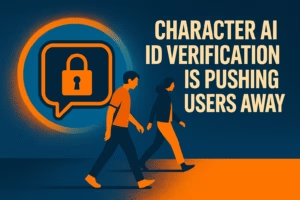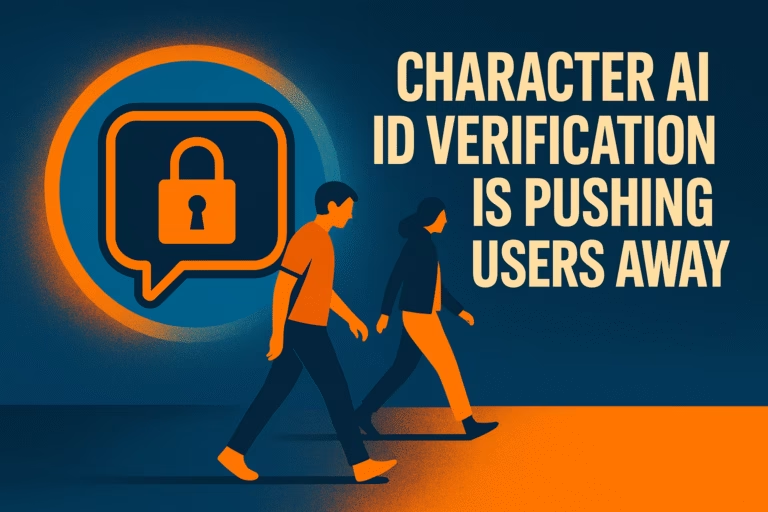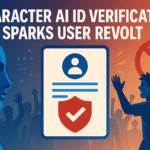Key Takeaways
Trust beats surveillance
Most users are not anti-safety. They are anti being treated like a data risk. Clear communication wins more than stricter gates.
Protect minors without punishing adults
Age checks should be precise and optional, with clear opt-outs and no hard blocks for verified adults.
Explain the data trail
Tell users what is stored, for how long, and why. If they cannot understand it in 10 seconds, they will churn.
Creativity needs headroom
Over-filtering breaks immersion. Let adults roleplay, with clear community tools to mute, block, and report.
Where users go next
Many are trying privacy-minded companions that balance memory with consent. A popular option is
Candy AI, which focuses on feel-real chats without heavy-handed gates.
Tip: screenshot or embed this section as a reusable component in your articles.
The product now screens age and applies stricter limits when it thinks a user is under 18. The flow has three steps. First, an automated model guesses your age based on account signals and behavior.
If that guess says you might be under 18, you get a selfie check that estimates age from a single photo. Only if the selfie check also fails are you asked for a government ID.
Chat time for flagged minors is capped per day and can be reduced further over time. The company frames this as child safety and legal compliance. Users see it as extra friction and a privacy risk they did not sign up for.
This is the context in which Character AI ID Verification shows up in people’s screens and support replies.
Practically, that means some adults will never see the prompt, some will pass on a selfie, and a small slice will be funneled to an ID request.
It also means roleplays that used to run long may be cut by daily timers on accounts classified as minors. None of this explains exactly who gets flagged or why.
When guidance is thin and outcomes are uneven, people assume the worst. That uncertainty is doing as much damage as the checks themselves.

Why The Backlash Is So Intense
Privacy is the flashpoint. Many in the Character AI audience online already worry about leaks and data brokers. Asking for a selfie or legal ID lands on that scar tissue.
People do not know who runs the verifier, how long images are stored, what fields are redacted, or how to force deletion after review. They also worry about false positives.
Adults with youthful faces. Adults who write in a playful tone. Adults on older devices with poor cameras. If any of that can tip the model, trust drops fast.
The second driver is control. Users want to shape their sessions without time pressure or warnings that interrupt the scene. When a system injects limits or out of character messages, it breaks immersion and makes creative work feel policed.
That is why a technical change turns into a cultural fight. People feel like paying adults treated as suspects while the rules remain opaque.
Mention Character AI ID Verification and the reaction you get is not a debate about policy. It is a reaction to feeling watched while trying to relax.
The third driver is risk versus reward. The core product is entertainment and creative practice. The upside is emotional, not financial. Handing over identity documents for a hobby feels mispriced. If a user can get similar chats elsewhere without that trade, they will move.
Even those willing to selfie hesitate because they cannot evaluate the verifier’s security posture. Without clear retention terms, audit promises, and a simple way to purge data, Character AI ID Verification reads like an open liability rather than a safety feature.
Who Actually Gets Hit
Most users won’t notice the change right away. The system quietly profiles accounts before taking action.
If your writing style, device settings, or previous data suggest you’re an adult, you keep full access. For others, the experience starts to shrink. Long-form writers suddenly hit chat timeouts.
Roleplayers who use light-hearted or youthful language risk being mistaken for minors. Even paid subscribers might be flagged if their interactions resemble the ones used to train the detection model.
Older users with naturally youthful faces face another problem. The selfie stage can’t tell the difference between genetics and deceit. If you’re over 30 and look young on camera, the system may still request ID.
That turns harmless features like low-light selfies or makeup filters into potential triggers.
Then there are users without any form of government identification – international fans, privacy advocates, or simply people who don’t want digital copies of their IDs floating around. They risk losing access altogether.
And finally, there’s the overlooked group – creators who use the platform to run interactive fiction, education bots, or therapeutic characters. These aren’t children at all.
They’re professionals testing narrative systems. Yet they’re lumped into the same pool of “risky accounts” because the AI can’t tell a story about a teenager without assuming you are one.
The problem isn’t just inconvenience – it’s the quiet erasure of adult creators from their own experiments.
Legal Pressure vs Product Reality
The company’s defense is predictable: “We have no choice.” California’s Age-Appropriate Design Code, lawsuits over minors and AI content, and global privacy directives have made age verification unavoidable.
That’s true – on paper. But regulation explains why companies need safety checks, not how they should be implemented. It’s entirely possible to comply with law and still protect users’ privacy. The problem is execution.
Character AI’s approach treats verification like punishment. It punishes the wrong group – adults who pay, create, and sustain the ecosystem.
The irony is that it doesn’t even stop determined minors. Kids will borrow IDs or use AI image generators to fake faces, while cautious adults will walk away.
From a legal standpoint, the company has a box ticked. From a business standpoint, it’s a brand disaster in motion.
The bigger issue is transparency. If verification was opt-in, limited to certain regions, or backed by an auditable third party, users might tolerate it.
But when a product hides behind automated decisions without showing its criteria, people start assuming manipulation. That’s how safety features turn into scandals – and why trust, once broken, is almost impossible to rebuild.
The Risk Model No One Asked For
At its core, this system is surveillance disguised as safety. It measures behavior, language, and metadata to decide who looks young. That means every chat becomes another data point.
Even innocent ones. The irony is heavy – an app meant to help people express themselves now grades them for writing “too playfully.”
When the AI guesses your age based on word choice or tone, it stops being about age at all. It becomes a model of conformity. Write like a teen, flagged. Use emojis, flagged.
Reference high school tropes, flagged. You’re being profiled not by truth but by pattern recognition. It feels clinical. The kind of feature that erases individuality in the name of protecting it.
There’s another danger hiding beneath the surface – secondary data. Every selfie, every timestamp, every chat can end up training future moderation models.
That means users may become part of the system that judges future users. And none of this is spelled out in plain language. The privacy policy is vague, the consent window easy to skip, and the burden of understanding is left to the user.
So what we have now isn’t just inconvenience.
It’s a quiet loss of creative space. People write less freely when they feel observed. They self-censor, shorten scenes, and avoid complex emotional arcs that might look “immature.” That’s not safety. That’s the slow death of creativity.
Better Ways To Prove Age Without Sacrificing Trust
It’s not that age verification itself is evil. It’s how it’s done. There are cleaner, safer methods that keep users in control. Platforms could rely on third-party verifiers who delete data immediately after approval.
They could use tokenized checks that return a simple “yes” or “no” without storing selfies or IDs. Even a voluntary badge system would be less intrusive than automated guessing.
Parental controls already exist on most phones. Character AI could have built its system to integrate with them instead of building its own database of faces and documents.
They could also have allowed region-based compliance – if California law forced verification, limit it there first. Instead, they rolled out a blanket rule that punishes global users for a local regulation.
It’s not too late to repair the damage. Communicate. Show exactly how verification works. Publish deletion guarantees and audit reports.
Create a simple dashboard where users can see what data exists about them and erase it instantly. That’s what real transparency looks like.
Until then, Character AI’s so-called protection will keep looking like overreach – a feature built to prove age but ending up proving fear.
What This Means for the Future of Emotional AI
This is more than a privacy fight. It’s a turning point for what emotional AI becomes.
Platforms like Character AI were supposed to feel personal – a space where you could build worlds, test ideas, and speak freely without being boxed in by rules written for children.
The introduction of strict ID systems signals something deeper: the end of anonymity as a creative tool.
When people have to prove who they are before they can imagine who they could be, the whole idea of emotional technology starts to rot. Writers hesitate.
Roleplayers censor themselves.
Users stop building characters that challenge identity boundaries because every prompt feels like a risk. Instead of helping people understand themselves, the AI starts teaching obedience.
If these verification trends continue, the next generation of chatbots won’t be companions — they’ll be compliance officers. Every interaction logged. Every emotional misstep flagged. That kills what made AI conversation interesting in the first place: the sense of discovery.
Ironically, the same companies justifying surveillance as “child safety” are pushing users straight into the arms of competitors that still value privacy.
Tools like Candy AI, Crushon, or Nectar AI have become refuges for those who want to explore without showing their passport first. The migration has already started, and it will only accelerate if Character AI keeps confusing control for care.
Winding Up
Character AI’s downfall didn’t start with the ID checks. It started the moment users stopped feeling trusted. When every update reads like a restriction, even loyal fans start packing their bags.
The tragedy is that this could have been prevented. Most users didn’t need perfection – they needed transparency. A sign that the company understood why people cared about creativity in the first place.
The real loss isn’t the platform. It’s the culture. The late-night story builders. The writers using bots to explore trauma, romance, and identity in ways they couldn’t with real people.
Those spaces are vanishing, not because people grew tired, but because the rules made imagination feel unsafe.
Every great tech community has its breaking point.
For Character AI, it’s here. But the migration isn’t a retreat – it’s evolution. Users are rebuilding elsewhere, in apps that don’t treat them like suspects. The story doesn’t end; it just moves to a new stage.
Maybe that’s the poetic irony of it all. The company built a platform for roleplay – and now it’s the one playing the villain in its own story.


